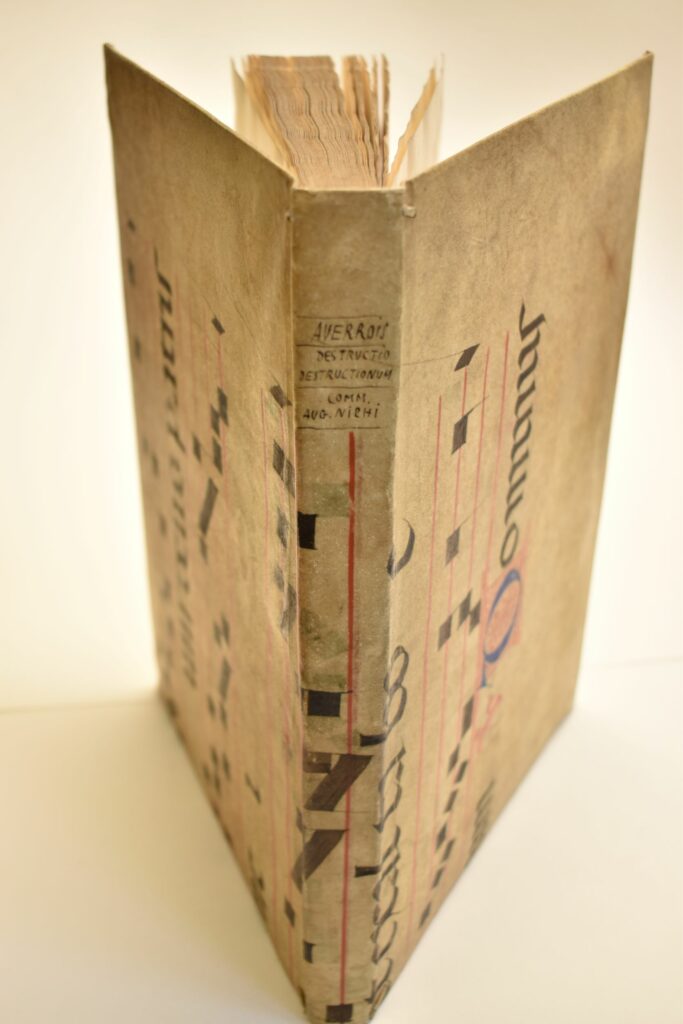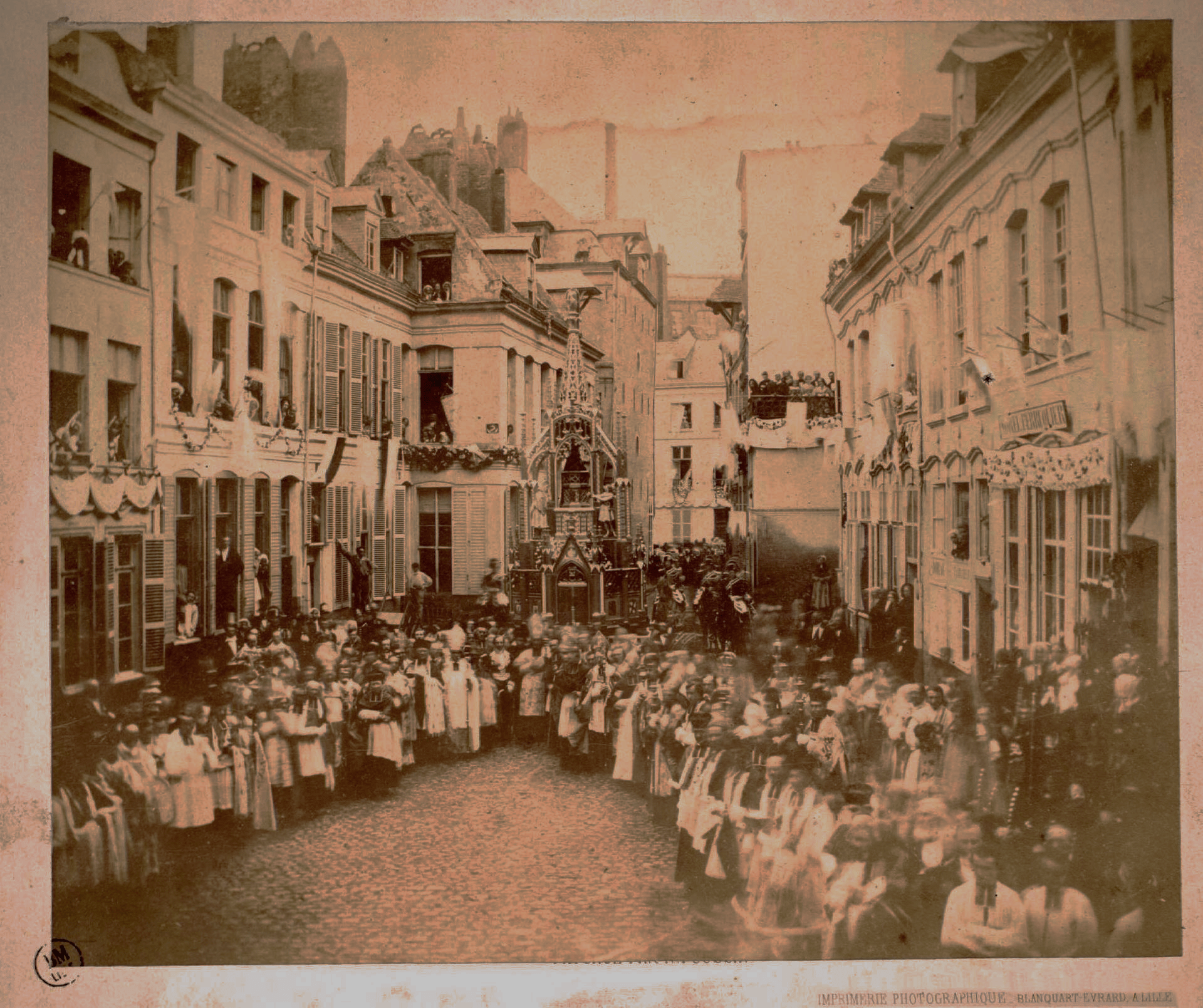Around 1030, Guido of Arezzo perfected a notation system which uses as a reference one then two staff lines representing a fixed sound. Guido of Arezzo added 2 lines, which allowed for more precision and an increased standardization in musical notation and in the sung result. A clef, repeated at the beginning of each staff line indicates the location of the do note (ut/C clef) or the fa note (fa/F clef), whose position can vary. Starting with this indication, the other notes can be deduced according to their position compared to the clef. The neumes or groups of neumes are noted as a point (punctum) or a rod (virga) according to their length and apply to a syllable.
-

Single leaf from a manuscript on parchment, [13th century?]. Réserve. -

Handwritten antiphonary page on parchment [13th century?], Reused for the cover of an incunabula from 1497 (Averroès, Destructiones destructionum Averroys […], 00159)
It is also Guido of Arezzo who came up with the names of the notes as we know them today (in major Romance and Slavic languages), as he explains it in his letter Epistola Guidonis Michaeli monacho, de ignoto cantu directa : the name of the current notes originates in the first syllable of each line of the Latin hymn Ut queant laxis, the “Hymn to St. John the Baptist”, attributed to Paul the Deacon a monk of the Lombards in the 8th century.

Ms. 334, fol. 4r. ©Herzog-August-Bibliothek, Wolfenbüttel
